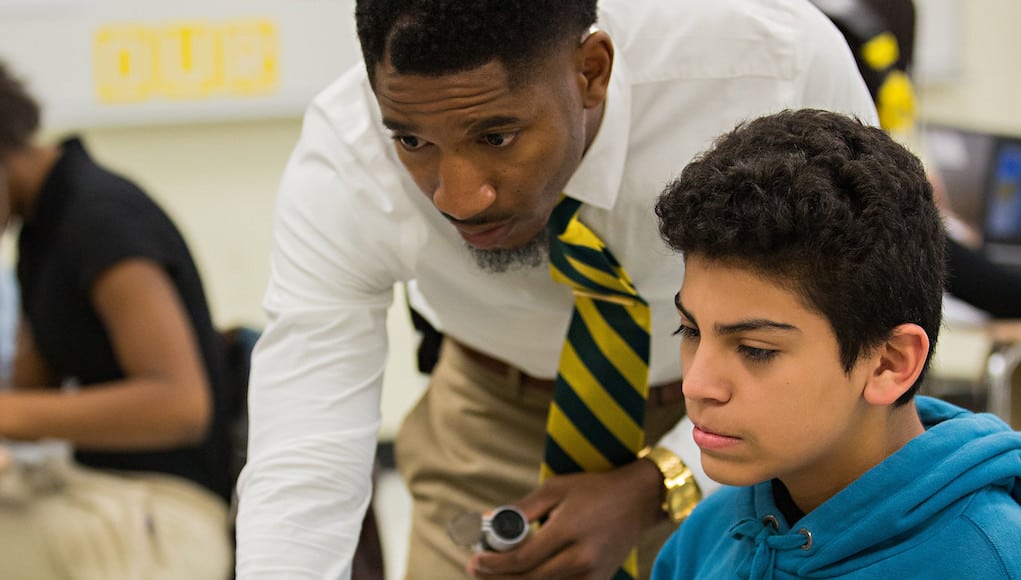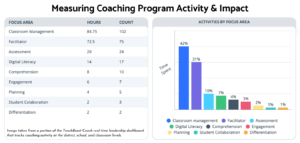Every Student Needs a Learning Coach
Key Points
-
As learning becomes more personalized, learning opportunities expanded and unbounded, and learning science research more robust, an updated and revised advisory role is more important than ever.
-
Redefining the coaching/mentor/advisor role as the educational landscape shifts is critical to ensure success for every learner.

The recent $50M investment in CoachHub builds confidence that coaching matters and can be effective. Demand has surged for executive coaches that can help develop and support leadership in the corporate sector. Productivity, staff longevity and talent acquisition in organizations can be amplified when leaders are effectively coached. These one-on-one interactions with an expert matter.
A parallel trend exists in K-12, especially during (and after) the pandemic. Tutoring, especially 1:1 high dosage formats, has proven to be critical in closing learning gaps exacerbated by the pandemic. Excellent mentorship and coaching of teachers, while difficult to implement, demonstrate the power of coaching in the K-12 sector. Coaching platforms like Edthena (which recently introduced automation of some coaching) also support educator coaching.
As learning becomes more personalized, learning opportunities expanded and unbounded, and learning science research more robust, an updated and revised advisory role is more important than ever. Currently, most public high schools have advisors, serving a couple of hundred students each, with a primary role of guiding course selection and post-secondary options. Additionally, counselors play a social-emotional and therapeutic role in some schools. Some public schools, public charter schools and private schools have long-advanced advisory as a program, with a defined set of learning experiences to not only coach and support, but teach transferable skills.
The new learner coach model (like the Dallas-based Big Thought’s Opportunity Advisors) can serve three purposes. First, to provide academic guidance and support for learners as they move through pathways from learning to earning. Second, to provide a caring and supporting environment to support mental wellness that every young person needs to thrive. Finally, the new learning coach model supports the growth of social capital by expanding young people’s professional networks – especially for those most marginalized.
Academic guidance and support
Traditionally the role of academic guidance and support has fallen to the school counselor often with responsibilities for large student numbers. While the American School Counselor Association recommends a 250:1 student-to-counselor ratio, the actual ratio in 2020-21 was 415:1. While these ratios are often limited by district financial constraints, other programs have emerged to support better academic guidance and overall support. The National Partnership for Student Success launched as a White House initiative in July 2022 as a public-private partnership to “bring together experienced organizations to recruit, screen, train, support, and engage an additional 250,000 caring adults in roles serving as tutors, mentors, student success coaches, wraparound service coordinators, and post-secondary transition coaches.” With almost 35,000 school counselors employed today, this input would provide a significant boost to help every child have a connection to an adult who knows them well.
Academic Career plans (portfolios, personalized career plans, etc.) are legislated in many states via Career and Technical Education (CTE) programs where students design pathways and get exposed to possible careers as early as high school. These tools support the personalized pathways for students as they enter into careers. Tools such as ASA’s Futurescape® allow students to independently explore the future of work, reducing the load on the high school counselor.
Wellness
Mentorship programs are abundant in United States schools but still have not scaled enough to ensure that every learner has a consistent well-trained mentor. Tools such as the Virtual Mentoring Portal and CricketTogether partnered during the virtual learning era of the pandemic to virtually support young people through mentorship programs. Big Brother and Big Sister programs support more than 400,000 school aged students through a strong volunteer network.
Most innovative school models now include a focus on the social-emotional well-being of students. Strong mentorship programs build the relationships that support positive social-emotional health. Research clearly shows that students who feel supported and a sense of belonging do better in school and in long term outcomes. Some of the core principles of learning sciences identify constructive emotions and a sense of belonging as critical elements to high quality learning outcomes.
With the increase in mental health challenges in young people, schools can enhance their coaching by launching programs that directly address these concerns. Stimulus funding during the pandemic was used by many schools to hire professionals, but despite this, just under 50% of schools reported inadequate mental health care resources.
Social capital
Finally, adults can serve as connectors to build social capital for students. Julia Freeland Fischer’s work on Social Capital describes the critical importance of connective networks to help long-term student outcomes. Many students have social networks of adults that surround them. They can be large or small, family related or not – and may help model and guide a student’s progress towards family-sustaining employment. We also know that not all students have equal amounts or types of social capital. Thus, tracking and building every student’s network can help increase the chances of long-term positive outcomes.
Investment in building social capital can occur through grant-funded programs to support the hiring of staff and the purchase of technology to better organize a social capital program. Additionally, equitable social capital building can be designed into the school model. Internship programs, such as those built into the Big Picture Learning network, build social capital during the school day. Many other work-based learning environments also succeed at this task. These examples provide evidence of building adult coaching models through community engagement (rather than just hiring more school counselors).
Core skills for Coaches
The expectations of learning coaches will encompass all three of the key elements described above – academic, wellness and social capital. In combination, these skills are difficult to come by and should be incorporated either into existing counseling programs or entirely new models of coach development. Critical areas of focus would include the following:
- Learning experience awareness. Learning coaches constantly scan the entire learning ecosystem for opportunities that may contribute to the success of the students. These may be virtual or community-based and range from independent tutoring experiences to internships to immersion programs in science or humanities.
- Empathy and understanding. Learning coaches must know each of their connected students well, both as students and outside of traditional school. Understanding other support services available to students support overall mental health.
- Guidance. Learning coaches can support the rebundling process – personalized for every student.
- Coaching. Just like for a sports team, tutoring, executive coaching, etc., effective coaching requires the ability to build strong relationships AND hold high expectations in addition to understanding the set of available opportunities. Coaching young people is different from coaching adults, yet both are growth-oriented (belief that every young person has unlimited potential), skills-focused (professional skill development, including leadership, can be learned), and ownership-grounded (young people must own the process and choices).
Considerations
Feasibility of a learning coach depends on certain factors. A system, deployed like an executive coaching model in the corporate sector, needs to consider the following:
- Financial support. Learning coaches may not be employed by the district but could be funded by the district as part of an outside set of services. Additionally, the community, national organizations, philanthropy, federal support, etc. can fund community-based coaching teams to support every child. It may be that, as the nature of learning changes, some teachers move from the classroom into these community-based coaching cohorts.
- Access. Learning coaches must be distributed equitably whether by numbers or talent. Clearly more affluent families pay for these types of services already in the form of tutoring, college advising, athletic advising, and a myriad of other consulting services available. Yet, every student must have access to talented coaches.
- Technology platforms. Digital solutions can support this effort. Virtual connections, opportunity databases, and communication tools to increase response time can all improve the experience for the coach-learner relationship.
Conclusion
As learning models shift to be more personalized and the learning ecosystem provides increasingly unbundled opportunities and pathways, developing a new model of learning coaches will accelerate success for every student. Redefining the coaching/mentor/advisor role as the educational landscape shifts is critical to ensure success for every learner.
This post is part of our New Pathways campaign sponsored by American Student Assistance® (ASA), Stand Together and the Walton Family Foundation.






0 Comments
Leave a Comment
Your email address will not be published. All fields are required.